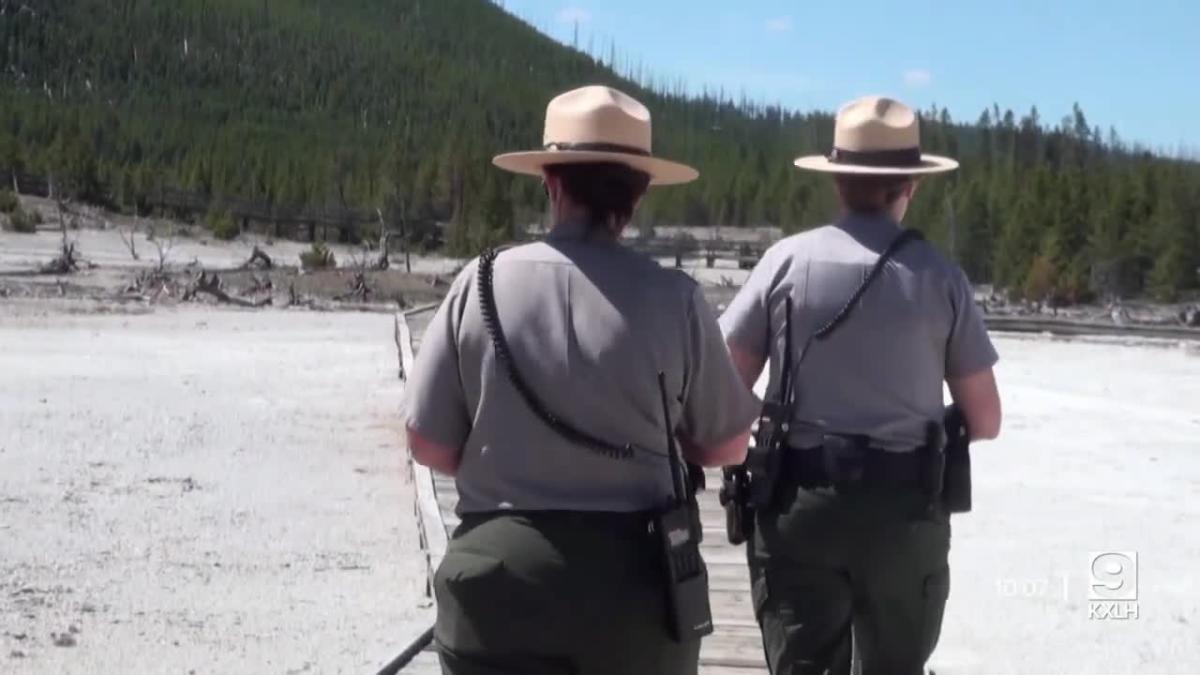Unveiling The Truth: Exploring The Deaths Of Yellowstone
Yellowstone National Park, one of the most iconic natural wonders in the United States, has captivated millions of visitors with its stunning landscapes and unique geothermal features. However, beneath its breathtaking beauty lies a darker side—a history of accidents, tragedies, and mysterious deaths. Understanding the "deaths of Yellowstone" requires delving into the park's inherent dangers and the human stories intertwined with its wilderness.
Every year, millions flock to Yellowstone to experience its geysers, hot springs, and abundant wildlife. Yet, amidst this awe-inspiring environment, the park's harsh conditions and unpredictable elements have claimed numerous lives. These incidents highlight the importance of preparation, awareness, and respect for nature when exploring such a pristine yet perilous area.
This article aims to shed light on the tragedies that have occurred within Yellowstone's borders, offering insights into the causes, lessons learned, and ways to stay safe. By examining these unfortunate events, we can honor those who lost their lives while promoting safer experiences for future visitors.
Read also:Top Shows Like Bluey A Comprehensive Guide For Families
Table of Contents
- Introduction to the Deaths of Yellowstone
- Geothermal Dangers in Yellowstone
- Wildlife Encounters and Fatalities
- Natural Disasters and Their Impact
- Human Error and Tragic Consequences
- Historical Incidents and Lessons Learned
- Safety Tips for Visitors
- Statistics and Data Analysis
- Conservation Efforts and Risk Management
- Conclusion: Honoring Lives and Promoting Safety
Introduction to the Deaths of Yellowstone
Yellowstone's vast wilderness offers unparalleled beauty but also harbors inherent risks. The "deaths of Yellowstone" encompass a range of incidents, from geothermal accidents to wildlife encounters. Understanding these tragedies is crucial for both visitors and park management.
Since its establishment in 1872, Yellowstone has witnessed over 1,000 fatalities, each with its own story. While some accidents are unavoidable, many stem from human error or ignorance of park guidelines. This section explores the historical context and significance of these deaths, emphasizing the need for education and vigilance.
Geothermal Dangers in Yellowstone
Yellowstone's geothermal features, including geysers, hot springs, and mud pots, are among its most famous attractions. However, these natural wonders pose significant risks. The scalding water and unstable ground can lead to severe injuries or death if not approached with caution.
Causes of Geothermal Accidents
- Ignoring warning signs and barriers
- Slipping on wet or uneven terrain
- Underestimating the heat of geothermal pools
Statistics reveal that geothermal-related fatalities account for a significant portion of park deaths. For instance, the 2016 incident involving a young man falling into a hot spring highlights the dangers of wandering off designated trails.
Wildlife Encounters and Fatalities
Yellowstone is home to an array of wildlife, including bears, wolves, and bison. While these animals contribute to the park's charm, they can also pose threats to human safety. Encounters with wildlife, particularly bears and bison, have resulted in numerous fatalities over the years.
Preventing Dangerous Encounters
- Keep a safe distance from all wildlife
- Carry bear spray and know how to use it
- Follow park regulations regarding camping and food storage
Research from the National Park Service indicates that most wildlife-related incidents occur due to human negligence. By adhering to park guidelines, visitors can minimize the risk of dangerous encounters.
Read also:Amelia Dimoldenbergs Ex An Indepth Look At Her Past Relationships
Natural Disasters and Their Impact
Yellowstone's location in a seismically active region makes it susceptible to natural disasters such as earthquakes and landslides. These events, while rare, have caused fatalities and disrupted park operations.
For example, the 1959 Hebgen Lake earthquake triggered a massive landslide, resulting in the deaths of 28 people. This tragedy underscored the importance of disaster preparedness and infrastructure improvements within the park.
Human Error and Tragic Consequences
Many deaths in Yellowstone stem from human error, such as ignoring safety warnings, venturing off trails, or engaging in risky behavior. These mistakes not only endanger the individuals involved but also place park rangers and rescue teams in peril during recovery efforts.
Education and awareness campaigns play a vital role in reducing human-error-related incidents. By promoting responsible behavior and respect for park rules, we can create a safer environment for all visitors.
Historical Incidents and Lessons Learned
Examining historical incidents provides valuable insights into the causes and prevention of fatalities in Yellowstone. From early explorers to modern-day tourists, each tragedy offers lessons that contribute to improved safety measures and park management.
Key Historical Incidents
- The 1983 Yellowstone Fires
- The 1994 Grizzly Bear Attack
- The 2016 Hot Spring Incident
These events highlight the importance of continuous education, technological advancements, and collaboration between park officials and visitors to ensure safety.
Safety Tips for Visitors
Preparing for a visit to Yellowstone involves understanding potential risks and taking necessary precautions. Below are some essential safety tips for visitors:
- Stay on designated trails and boardwalks
- Carry bear spray and familiarize yourself with its use
- Observe wildlife from a safe distance
- Check weather conditions and park alerts before your visit
By following these guidelines, visitors can enjoy a safe and memorable experience in Yellowstone.
Statistics and Data Analysis
Data analysis provides a clearer understanding of the frequency and causes of fatalities in Yellowstone. According to the National Park Service, geothermal accidents, wildlife encounters, and drowning account for the majority of deaths.
Research from the Journal of Travel Medicine reveals that between 2007 and 2016, there were 15 geothermal-related fatalities, 10 wildlife-related deaths, and 25 drownings in Yellowstone. These statistics emphasize the need for targeted safety initiatives and visitor education programs.
Conservation Efforts and Risk Management
Yellowstone's management team continuously works to enhance safety and conservation efforts. Initiatives include installing additional warning signs, improving trail conditions, and conducting regular safety drills for park staff.
Collaboration with research institutions and conservation organizations ensures that the park remains a safe and sustainable destination. By balancing visitor access with environmental protection, Yellowstone aims to preserve its natural wonders for future generations.
Conclusion: Honoring Lives and Promoting Safety
The "deaths of Yellowstone" serve as a poignant reminder of the park's inherent dangers and the importance of responsible behavior. By understanding the causes of these tragedies and implementing effective safety measures, we can honor the lives lost while promoting safer experiences for all visitors.
We encourage readers to share this article, leave comments, and explore other resources on Yellowstone safety. Together, we can ensure that this magnificent park remains a place of wonder and inspiration for generations to come.


